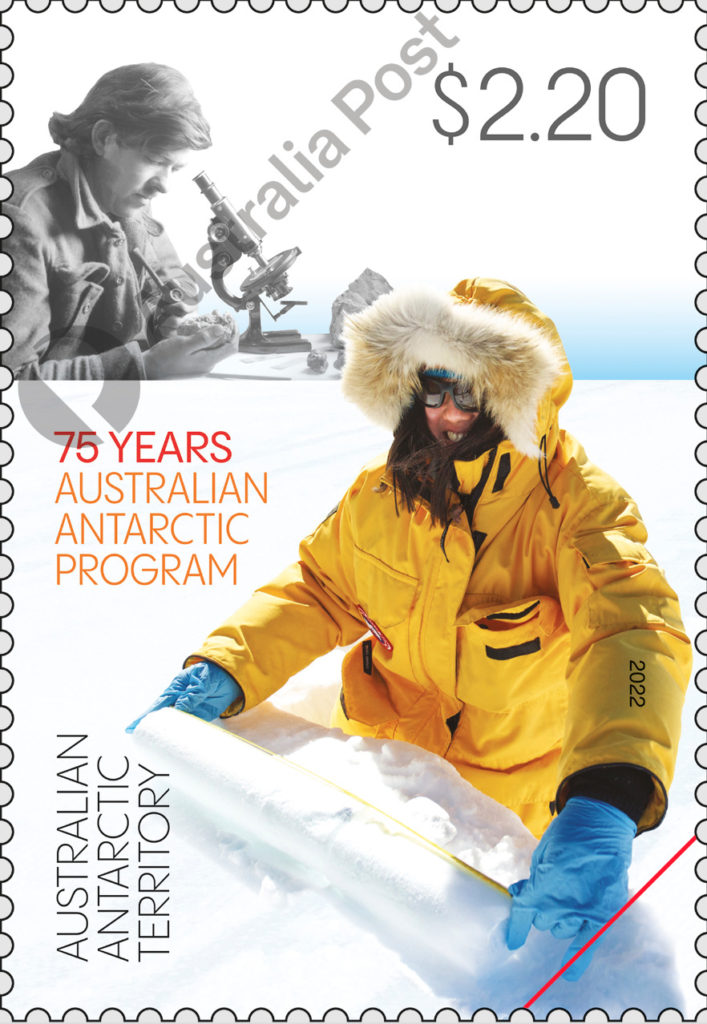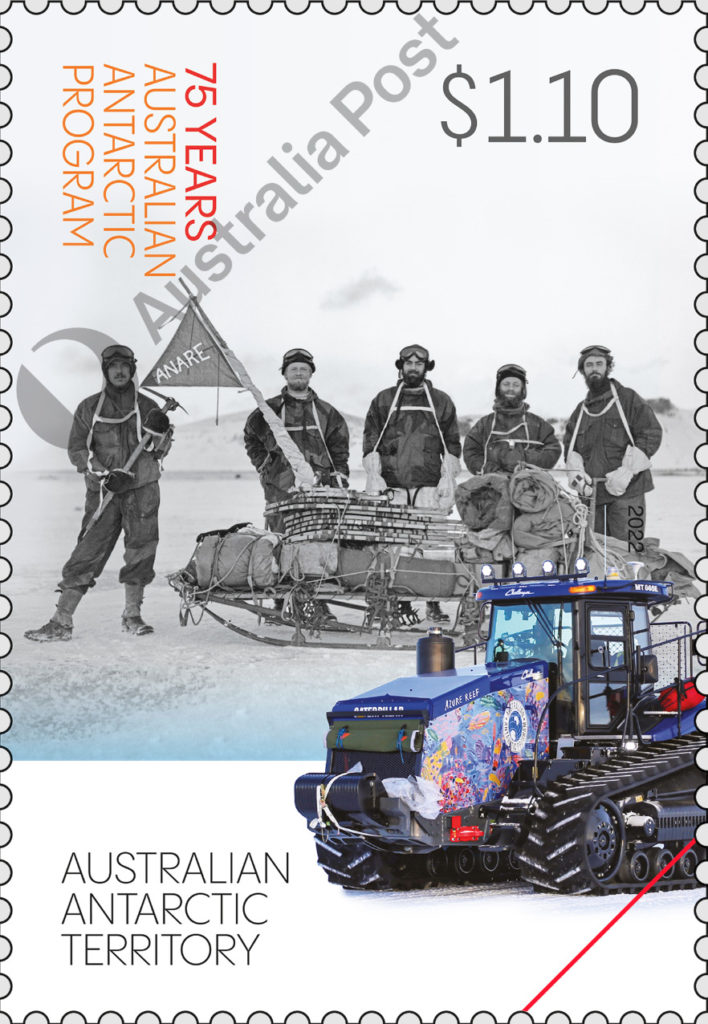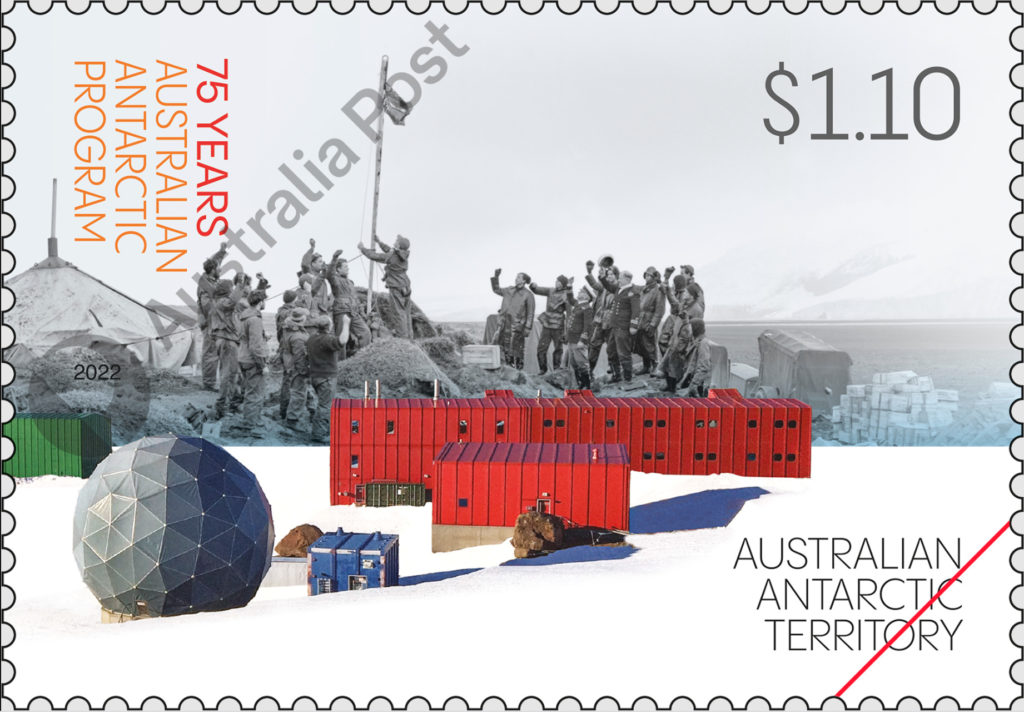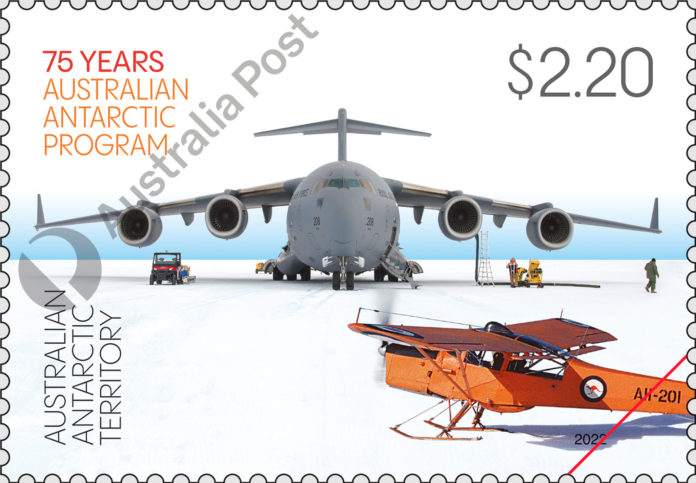Australia Post has marked the 75th anniversary of the Australian government’s scientific research program in Antarctica with a new stamp release.
The Australian National Antarctic Research Expeditions (ANARE), now known as the Australian Antarctic Program, was formed in 1947, with a key aim to establish a permanent station on the Antarctic continent for scientific research and exploration. The 1947–48 expedition led to the sub-Antarctic Heard and Macquarie Island bases, with the first continental base opened in 1954.
Australia Post Philatelic Manager, Michael Zsolt says it was important to recognise the history of Australia’s presence in Antarctica and its substantial scientific research program.
“Over the past 75 years this work has evolved, and it continues to provide globally significant insights. Today’s diverse and comprehensive program addresses questions of climate change, the human footprint in Antarctica, conservation of Antarctic and Southern Ocean wildlife, and the sustainability of southern polar fisheries,” he said.
Australian Antarctic Division director, Kim Ellis said he was delighted to see Australia’s proud Antarctic history honoured with this release.
“The Australian Antarctic Program of today has built upon those achievements and we continue to lead the way in Southern Ocean and Antarctic science that informs climate and conservation policy,” he said.

ANARE was founded after Sir Douglas Mawson successfully lobbied the federal government to commit to Australian scientific interest in Antarctica, professionalising Australia’s endeavours, which had previously been privately funded.
There are now three research stations that operate throughout the year in the Australian Antarctic Territory (AAT) – Mawson, Davis and Casey. Together with several smaller ‘summer’ field camps and the sub-Antarctic Macquarie Island station, they support Antarctic exploration and scientific research.

$1.10 stamp – A base for science
The first ANARE voyage coincided with Britain’s handover of Heard Island to Australia in 1947. The stamp shows the raising of the Australian flag at Atlas Cove, where the first sub-Antarctic station was established. In 1954, Mawson station became Australia’s first research station and the Heard Island station was closed. The colour photograph in the stamp shows Mawson station in recent years.
$1.10 stamp – Field expeditions
Field expeditions are essential to Antarctic research, and effective transport in such a hostile environment is crucial and ever developing. This stamp shows an early expedition where sled and snow-shoe technology supported the ultimately unsuccessful attempt to ascend the volcanic Big Ben, on Heard Island, during the first year of ANARE. It is paired with the latest modern transport vehicle, one of five tractors painted with a distinctive design by Australian artist Ken Done. The tractor is being used to traverse inland on the continent in a quest to obtain an ice core dating back a million years.

$2.20 stamp – Polar science
The early photograph shows a geologist at his microscope in the first year of the program; it is paired with a colour photograph showing a glaciologist during recent years processing an ice core at Aurora Basin.
$2.20 stamp – Aviation support
Exploration and research in the AAT has been supported by fixed-wing aircraft. The stamp shows an Auster Mark 6, built from two Austers damaged during their transportation to Mawson station on the ship Kista Dan. Access to the continent was transformed in 2008 with the establishment of an air link from Hobart to Wilkins Aerodrome near Casey. Since 2015, these flights have been supplemented by RAAF C-17A Globemaster IIIs, shown in the second photo, which can bring in heavy equipment and undertake airdrops year-round.


